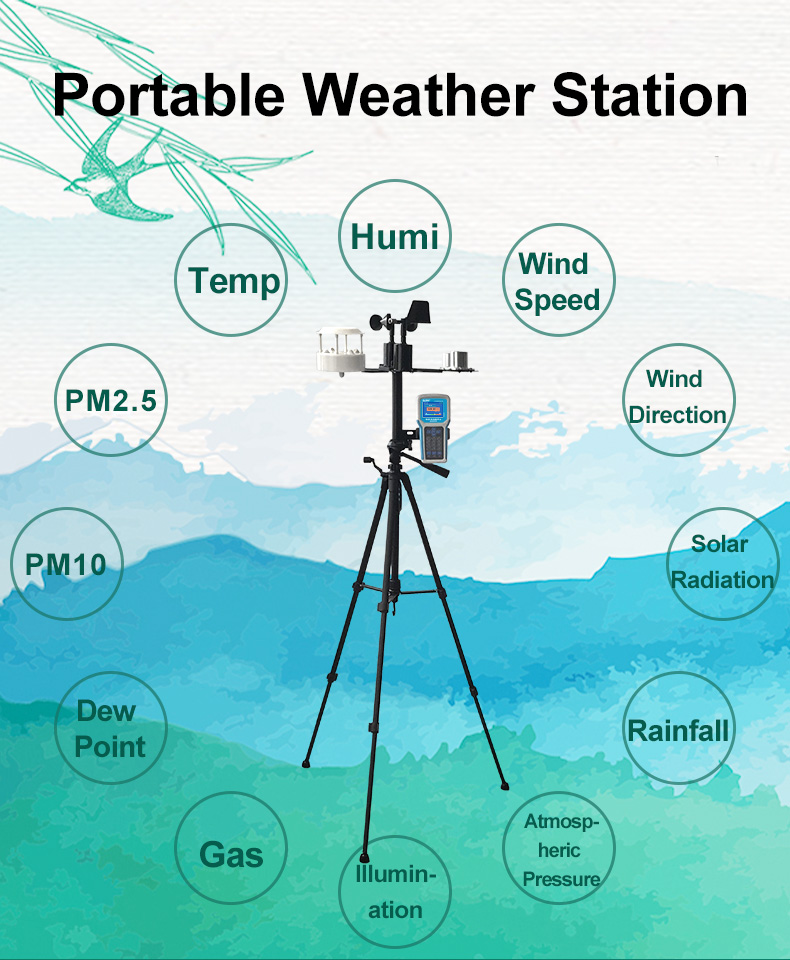Weather stations for schools are valuable educational tools that provide students with hands-on experience in meteorology and environmental studies. Installing weather stations in schools allows students to learn about weather patterns, climate change, and the impact of weather on our daily lives. This article explores the benefits of weather stations in schools, highlighting the importance of engaging students in scientific exploration and fostering a deeper understanding of our natural environment.

Use the benefits of weather stations for schools
Enhancing Science Education:
Weather station for schools offer an interactive platform for students to engage in scientific inquiry and exploration. By collecting and analyzing weather data, students can learn about various meteorological phenomena, such as temperature, humidity, wind speed, and precipitation. These real-time measurements provide a practical context for understanding scientific concepts and principles, fostering a deeper appreciation for the scientific method.
Promoting Environmental Awareness:
Weather stations help cultivate environmental consciousness among students. By monitoring and studying weather patterns, students gain insights into climate change, extreme weather events, and their impact on ecosystems and human activities. This knowledge motivates them to become environmentally responsible citizens and advocates for sustainable practices in their communities.
Practical Application of Mathematics and Technology:
Weather stations present opportunities for students to apply mathematical concepts and technological skills. Students can analyze weather data using statistical methods, graphing techniques, and data visualization tools. Moreover, installing and maintaining weather station equipment introduces students to various technologies, such as sensors, data loggers, and software applications. These experiences enhance their proficiency in data analysis and interpretation, as well as their technological literacy.
Cross-Curricular Integration:

Weather station for schools facilitate cross-curricular integration by connecting various disciplines, including science, mathematics, geography, and even art. Students can explore the geographical factors influencing weather patterns, create weather-themed artworks, or study the historical context of weather-related events. Collaborative projects across different subjects promote a holistic understanding of the complexities of weather and its broader implications.
Citizen Science and Community Engagement:
Weather stations enable students to contribute to citizen science initiatives and engage with their local communities. Student-led weather monitoring programs can provide valuable data for meteorological research, climate studies, and disaster preparedness efforts. Sharing weather data with other schools or community organizations promotes collaboration, fosters a sense of global citizenship, and encourages cooperative learning among students.
Career Exploration and STEM Education:
By actively participating in weather data collection and analysis, students gain insights into potential career paths in meteorology, climatology, environmental science, and related fields. Weather stations serve as a catalyst for sparking interest in science, technology, engineering, and mathematics (STEM) education. They provide a platform for students to develop critical thinking, problem-solving, and teamwork skills essential for future STEM careers.
Building Resilience and Adaptation Skills:
Weather stations empower students to understand the dynamic nature of weather and adapt to changing conditions. By observing weather patterns, students learn about climate variability, seasonal changes, and extreme weather events. This knowledge enhances their ability to make informed decisions regarding personal safety, outdoor activities, and even long-term planning, fostering resilience and adaptability.
Conclusion:
Weather station for schools play a vital role in engaging students in meteorology, environmental education, and scientific exploration. These stations offer practical learning opportunities, enhance interdisciplinary connections, and promote environmental awareness. By actively participating in weather monitoring, students develop critical skills and competencies necessary for success in STEM fields. Furthermore, weather stations foster a sense of responsibility towards our natural environment and inspire future generations to become stewards of the Earth.
